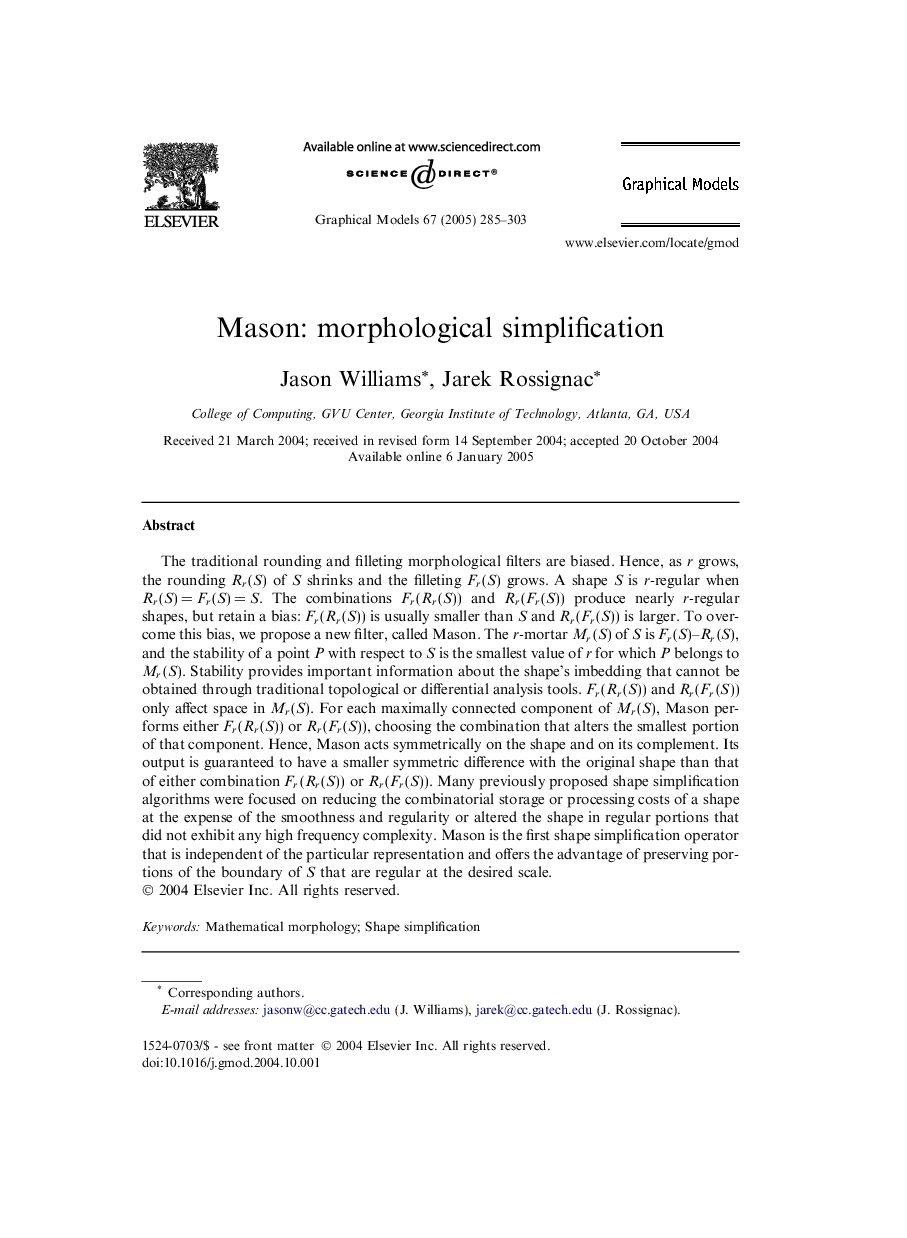| Article ID | Journal | Published Year | Pages | File Type |
|---|---|---|---|---|
| 10336876 | Graphical Models | 2005 | 19 Pages |
Abstract
The traditional rounding and filleting morphological filters are biased. Hence, as r grows, the rounding Rr (S) of S shrinks and the filleting Fr (S) grows. A shape S is r-regular when Rr (S) = Fr (S) = S. The combinations Fr (Rr (S)) and Rr (Fr (S)) produce nearly r-regular shapes, but retain a bias: Fr (Rr (S)) is usually smaller than S and Rr (Fr (S)) is larger. To overcome this bias, we propose a new filter, called Mason. The r-mortar Mr (S) of S is Fr (S)-Rr (S), and the stability of a point P with respect to S is the smallest value of r for which P belongs to Mr (S). Stability provides important information about the shape's imbedding that cannot be obtained through traditional topological or differential analysis tools. Fr (Rr (S)) and Rr (Fr (S)) only affect space in Mr (S). For each maximally connected component of Mr (S), Mason performs either Fr (Rr (S)) or Rr (Fr (S)), choosing the combination that alters the smallest portion of that component. Hence, Mason acts symmetrically on the shape and on its complement. Its output is guaranteed to have a smaller symmetric difference with the original shape than that of either combination Fr (Rr (S)) or Rr (Fr (S)). Many previously proposed shape simplification algorithms were focused on reducing the combinatorial storage or processing costs of a shape at the expense of the smoothness and regularity or altered the shape in regular portions that did not exhibit any high frequency complexity. Mason is the first shape simplification operator that is independent of the particular representation and offers the advantage of preserving portions of the boundary of S that are regular at the desired scale.
Keywords
Related Topics
Physical Sciences and Engineering
Computer Science
Computer Graphics and Computer-Aided Design
Authors
Jason Williams, Jarek Rossignac,
